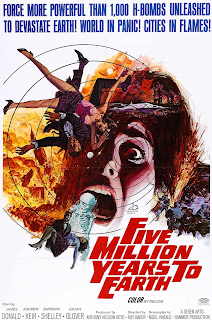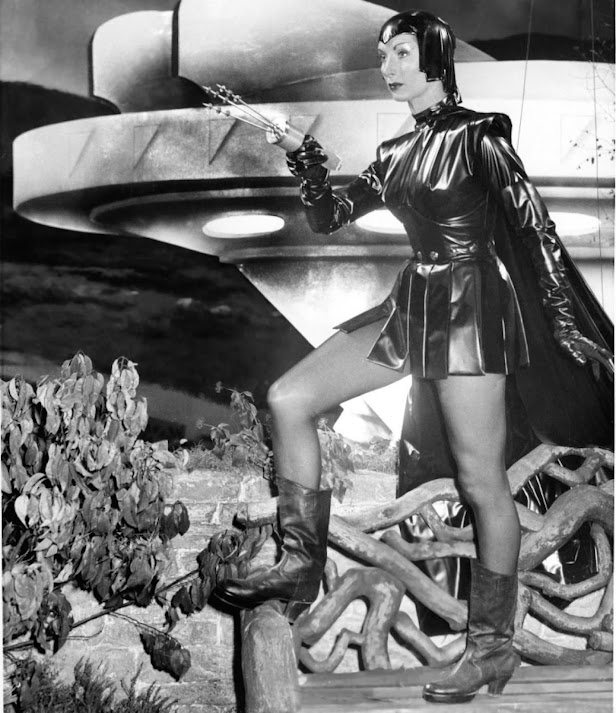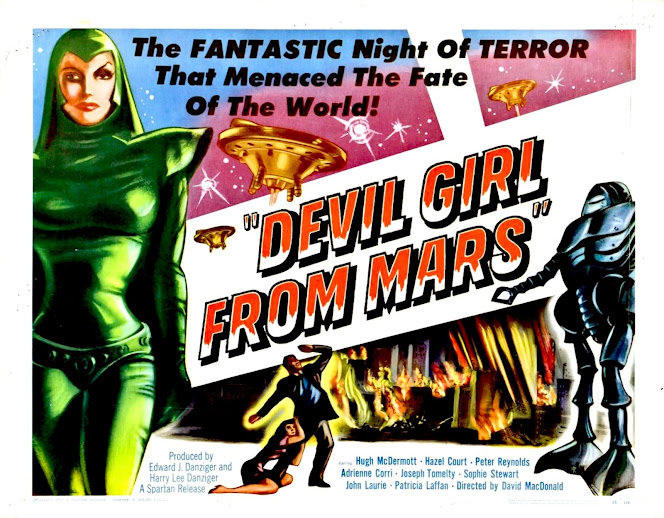[This essay was written in 2015.]
I hate this movie. Yes, it is an adequate take on
the Wells’ story modernized (though Mars is never mentioned); certainly the
effects are often astonishing, as well as the sound design.
 |
An early one-sheet poster
|
But there are three
aspects that repel me: • For reasons I cannot fathom, Steven Spielberg’s soul mate
since Schindler’s List has been Director of Photography Janusz Kaminski.
Kaminski was perfect to photograph Schindler’s List because that film was driven
by a grey, dark depressing story and Kaminski’s cinematic inclinations were
also grey, dark and depressing. However, Kaminski has photographed probably
every Spielberg movie since, perhaps a dozen. My problem is that all Kaminski
seems to be able to do is grey, dark and depressing. And, frankly, his choices
depress me. This version of War of the Worlds suffers due to the lack of any
meaningful color. It could have been so much better if it had been colorful,
but Spielberg himself clearly prefers all his films to feel grey, dark, and
depressing these days. I long for the colorful days of Close Encounters, ET,
and Raiders of the Lost Ark.
.
• Ray Ferrier
is as about an unsympathetic lead as one can imagine. We meet him as he’s
getting off his dock-worker job and we very quickly learn that he is an
irresponsible narcissist slob. Tom Cruise’s performance may be on the money
from Spielberg’s point of view, but it overwhelms any humanity that Ray could
have shown. A warmer Ray would have been my preference, especially since he has
his children...
.
• Most
importantly, any scene that included Ray’s two children, Rachel and Robby, was
for me literally like the proverbial fingernails on a chalk board. From minute
one, Robby’s teenage angst was nothing less than an onslaught on my sensibilities. As for Rachel, her continual, ceaseless whining seemed endless. Ray may
not be the most sympathetic father, but from the start of the invasion his
instincts and choices were invariably correct, saving all their lives time and
time again. Despite their being perhaps ten and sixteen years old, and despite
their being instantly thrust into a nightmare out of proportion with any horror
they could ever have imagined, very quickly it should have dawned on them that
against all probability, their father was keeping them alive. Everywhere they
could see countless people dissolving and dying within inches of their car, yet
at no point did they stop whining and complaining. Rachael had one speed:
screaming at her father. Robby’s insolence and ignorant bravado wore me down.
.
These days, I’ll sometimes watch this movie to enjoy the
Martian tripods, but I always have to fast forward through any scene with the
kids. Now and again, acquaintances say that I shouldn’t be so hard on the
kids; after all aren’t they behaving just like typical American kids at their
ages? My feeling at those times is that somehow I doubt it. Perhaps these folks
are correct about the kids’ behavior at the outset of this drama, but, excuse
me, it oughtn’t take a prodigy or a rocket scientist for them to quickly figure
out that their best bet was to shut up and help their dad.
 |
An early appearance of a tripod war machine.
|
That said, I did enjoy the several homages to the 1953
George Pal film, for example, the periscope affair that seeks them out in the
ruined house, the three-fingered arm that slips out of a downed war machine,
the cameos of Gene Barry and Ann Robinson, the protagonists of Pal’s film, and
more.
A final note: I’ve spent a few minutes scrolling through the
popular critical web site www.rottentomatoes.com looking for quotes to use in
my Naysayers and Enthusiasts above and found 253 reviews from newspapers,
magazines, and blog critics. I was astonished to learn that all but a handful
positively loved the movie. Unbelievably, from my point of view, nearly all
reported some variation of what Ken Tucker of New York Magazine/Vulture said:
“Steven Spielberg’s War of the Worlds is huge and scary, moving and
funny—another capper to a career that seems like an unending succession of
captivations.” I say “unbelievably” because it’s hard for me to understand how
so many critics (who are, after all, people) could not see and feel
uncomfortable by the children’s ceaseless reprehensible behavior. The fact that
they are frightened is not nearly sufficient excuse or justification; I cannot
imagine why any normal person would so easily endure such an onslaught of
negative energy and then praise the film as high entertainment.
 |
An early one-sheet teaser poster for Steven Spielberg’s version of War of the Worlds (top right). The
artist chose to use the powerful 3D block lettering that graced the posters of so many spectacular
epics of the 1950s and 60s, chief among them Ben-Hur, King of Kings, and Genghis Khan. Though
I don’t think much of this War of the Worlds film, I adore this style of poster art.
|
Apparently I am one of the very few who was so effected. All
and all, this film was a huge disappointment to me.
USA. Paramount Pictures, DreamWorks SKG, Amblin
Entertainment, Cruise/Wagner Productions. C. 1.85:1. 116m.
CREW: Director Steven Spielberg. Script Josh
Friedman, David Koepp. Based on the novel by H.G. Wells, Executive Producers
Paula Wagner. Producers Kathleen Kennedy, Colin Wilson. Score John Williams.
Director of Photography Janusz Kaminski. Editor Michael Kahn. Casting Terri
Taylor, Debra Zane. Production Designer Rick Carter. Special Visual Effects
Industrial Light & Magic (ILM).
CAST: Narrator Morgan Freeman. Ray Ferrier Tom Cruise.
Rachel Ferrier Dakota Fanning. Rob- bie Ferrier Tim Robbins. Mary Ann Miranda
Otto. Harlan Ogilvy Justin Chatwin. Grandmother Ann Robinson. Grandfather Gene
Barry.
Naysayer.
“It doesn’t work as a science fiction epic, it doesn’t work
as a tale of families bonding in the face of tragedy, and it certainly doesn’t
work as a mingling of the two.”—Michael W. Phillips, Jr., Goatdog’s Movies
.
Enthusiast.
“Steven Spielberg has delivered the blockbuster of the
summer, a stunning sci-fi spectacular that’ll blow you away. Yes, I know I’m
gushing, but War of the Worlds really is that good.—David Edwards, Daily Mirror [UK]
 Formal Notice: All images, quotations, and video/audio clips used in this blog and
in its individual posts are used either with permissions from the copyright
holders or through exercise of the doctrine of Fair Use as described in U.S.
copyright law, or are in the public domain. If any true copyright holder
(whether person[s] or organization) wishes an image or quotation or clip to be
removed from this blog and/or its individual posts, please send a note with a
clear request and explanation to eely84232@mypacks.net and your request will be
gladly complied with as quickly as practical.
Formal Notice: All images, quotations, and video/audio clips used in this blog and
in its individual posts are used either with permissions from the copyright
holders or through exercise of the doctrine of Fair Use as described in U.S.
copyright law, or are in the public domain. If any true copyright holder
(whether person[s] or organization) wishes an image or quotation or clip to be
removed from this blog and/or its individual posts, please send a note with a
clear request and explanation to eely84232@mypacks.net and your request will be
gladly complied with as quickly as practical.























